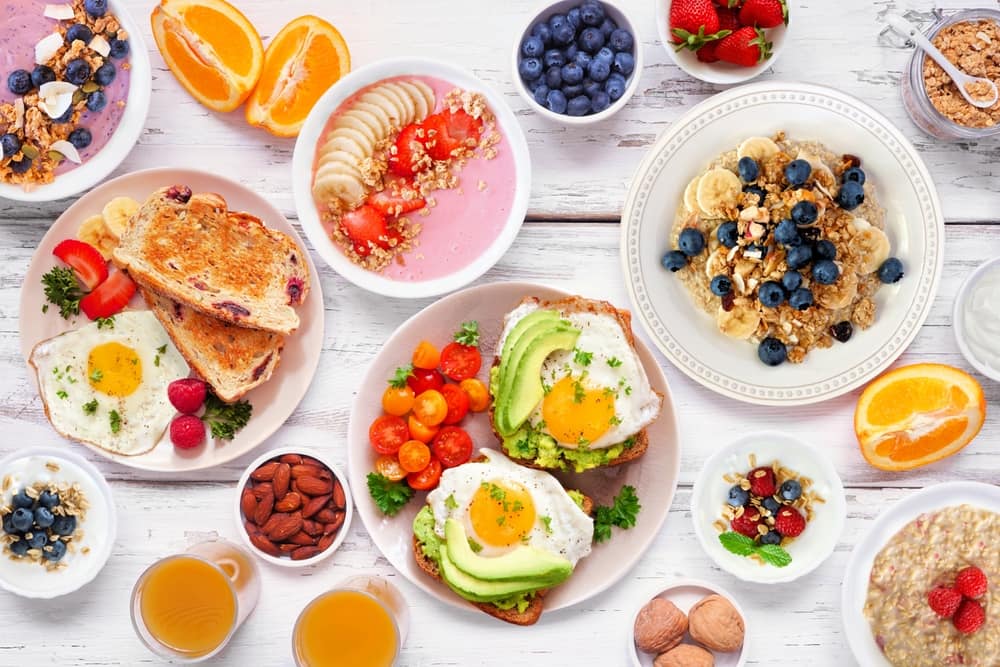What Is the Low-Histamine Diet? A Comprehensive Guide to Managing Histamine Intolerance Naturally
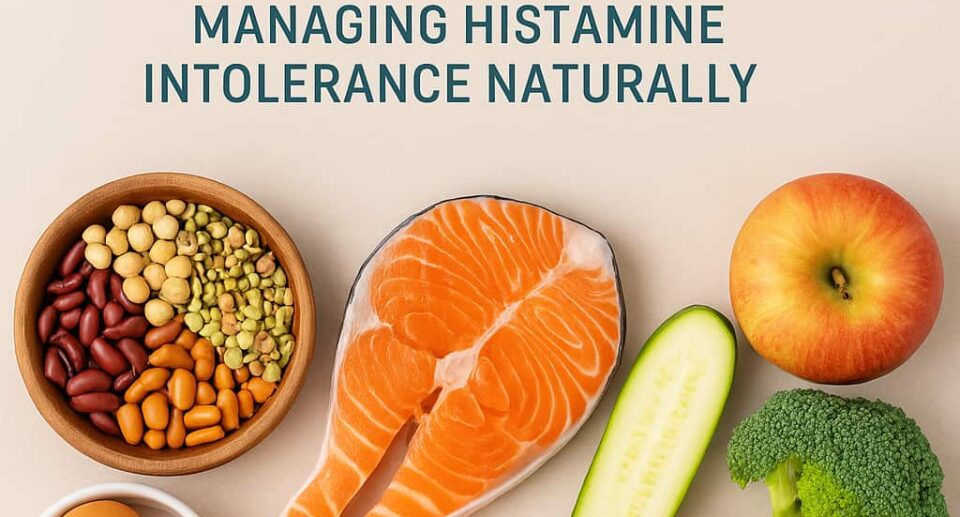

Understanding Histamine and Why It Matters
In recent years, many people have started paying closer attention to how food affects their bodies not just in terms of weight, but also in how it influences their energy levels, mood, and overall well-being. For some, the issue may not be about carbs or calories, but something a bit more complex: histamines.
Histamine is a natural compound your body produces to support key processes like digestion, brain function, and immune defense. While histamine plays a critical role in keeping us healthy, too much of it or an inability to break it down properly can lead to a variety of unpleasant symptoms. That’s where the low-histamine diet comes into play.
This specialized way of eating is designed to help people who may be dealing with histamine intolerance, a condition where the body can’t effectively process histamine from food. Symptoms like migraines, skin rashes, digestive issues, or fatigue can often be traced back to high levels of histamine.
But before jumping into any diet, it’s essential to recognize that there is no one-size-fits-all approach to health. What works for one person may not work for another. That’s why an individualized approach to nutrition is key, especially when dealing with complex issues like histamine intolerance.
Also, if you suspect histamine intolerance or have persistent symptoms, it’s crucial to consult with a healthcare provider or a registered dietitian. They can help you determine if a low-histamine diet is appropriate for your specific needs and guide you through it safely.
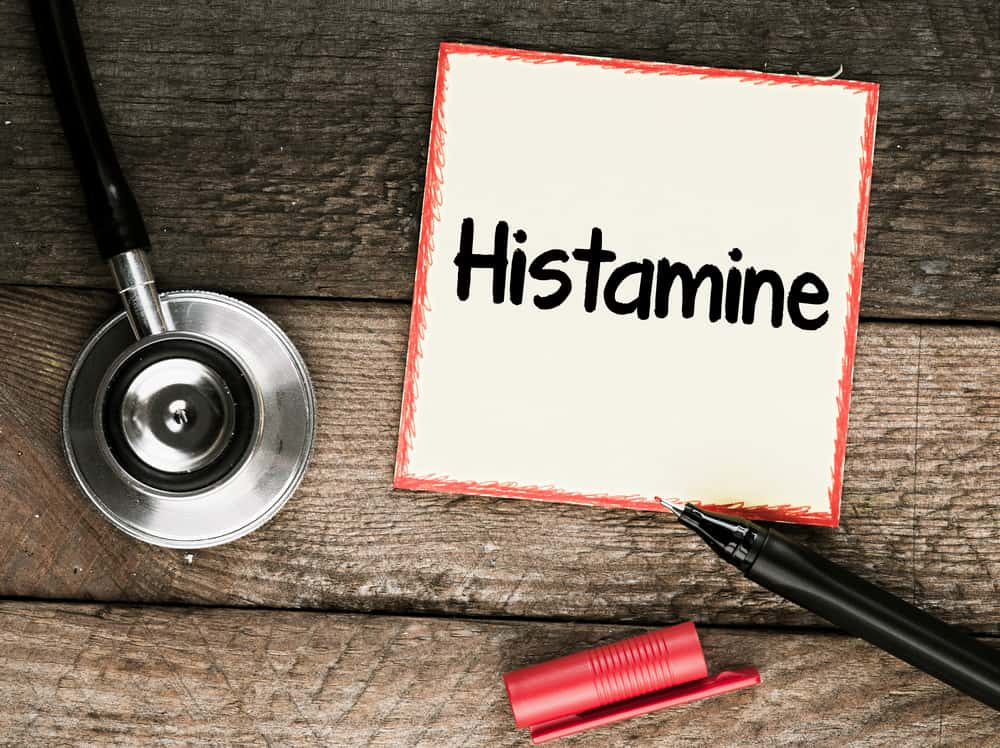

What Is Histamine?
Histamine is a naturally occurring chemical in the body that plays several important roles. Think of it as a multitasker it’s involved in everything from how your body digests food to how it responds to allergens and even how your brain communicates internally.
Digestive Support
In your stomach, histamine helps stimulate the release of gastric acid, which is essential for breaking down food. Without this function, your body would struggle to absorb key nutrients effectively, no matter how healthy your diet is.
You’ve probably heard about histamine in the context of allergies—that’s because it’s part of your immune system’s defense mechanism. When your body detects a potential threat (like pollen or a food allergen), it releases histamine to trigger inflammation and get your immune system to take action. That’s why histamine is often associated with runny noses, sneezing, and itchy eyes during allergy season.
Histamine also plays a critical role in the central nervous system, acting as a neurotransmitter a chemical messenger that helps brain cells communicate. It helps regulate your sleep-wake cycle, alertness, and appetite, among other things.
Where Does Histamine Come From?
Your body produces histamine naturally, especially in immune cells, the digestive tract, and the brain. However, histamine isn’t just something your body makes it’s also found in the foods you eat.
Certain foods, especially those that are aged, fermented, or processed, tend to contain high levels of histamine. When these foods are consumed, your body must break down the extra histamine using specific enzymes primarily one called diamine oxidase (DAO).
If your body can’t produce enough DAO or it’s not functioning properly, histamine builds up in your system, potentially leading to uncomfortable symptoms. That’s where histamine intolerance begins to show itself, and why the low-histamine diet can be so helpful for some people.


What Is Histamine Intolerance?
Histamine intolerance happens when your body can’t break down histamine properly, leading to a buildup of histamine in the bloodstream. This is not the same as a food allergy or sensitivity it’s more like an overload your body can’t handle efficiently.
Normally, your body uses enzymes like diamine oxidase (DAO) and histamine N-methyltransferase (HNMT) to metabolize histamine. When these enzymes are deficient or underactive, the histamine from food and your body’s natural processes begins to accumulate, causing a wide range of symptoms that are often confusing or mistaken for other conditions.
Symptoms can vary from person to person, but some of the most common include:
- Headaches or migraines
- Skin issues: hives, eczema, itching, or flushing
- Digestive problems: bloating, diarrhea, stomach pain, nausea
- Nasal congestion or runny nose
- Fatigue and brain fog
- Irregular menstrual cycles
- Anxiety or dizziness
Because these symptoms often mimic allergies, food sensitivities, or even conditions like IBS or anxiety, histamine intolerance is frequently misdiagnosed or overlooked.
Several factors can contribute to this condition:
- Low DAO enzyme levels, which may be genetic or caused by gut inflammation, medications, or nutrient deficiencies
- Intestinal conditions like leaky gut, IBS, Crohn’s disease, or celiac disease
- Certain medications that block DAO or trigger histamine release (such as NSAIDs, antibiotics, or antidepressants)
- High intake of histamine-rich or histamine-releasing foods over time
If your body can’t process histamine efficiently, reducing how much you consume can give your system a break. A low-histamine diet helps identify and eliminate trigger foods that worsen your symptoms and gives your body space to rebalance itself.
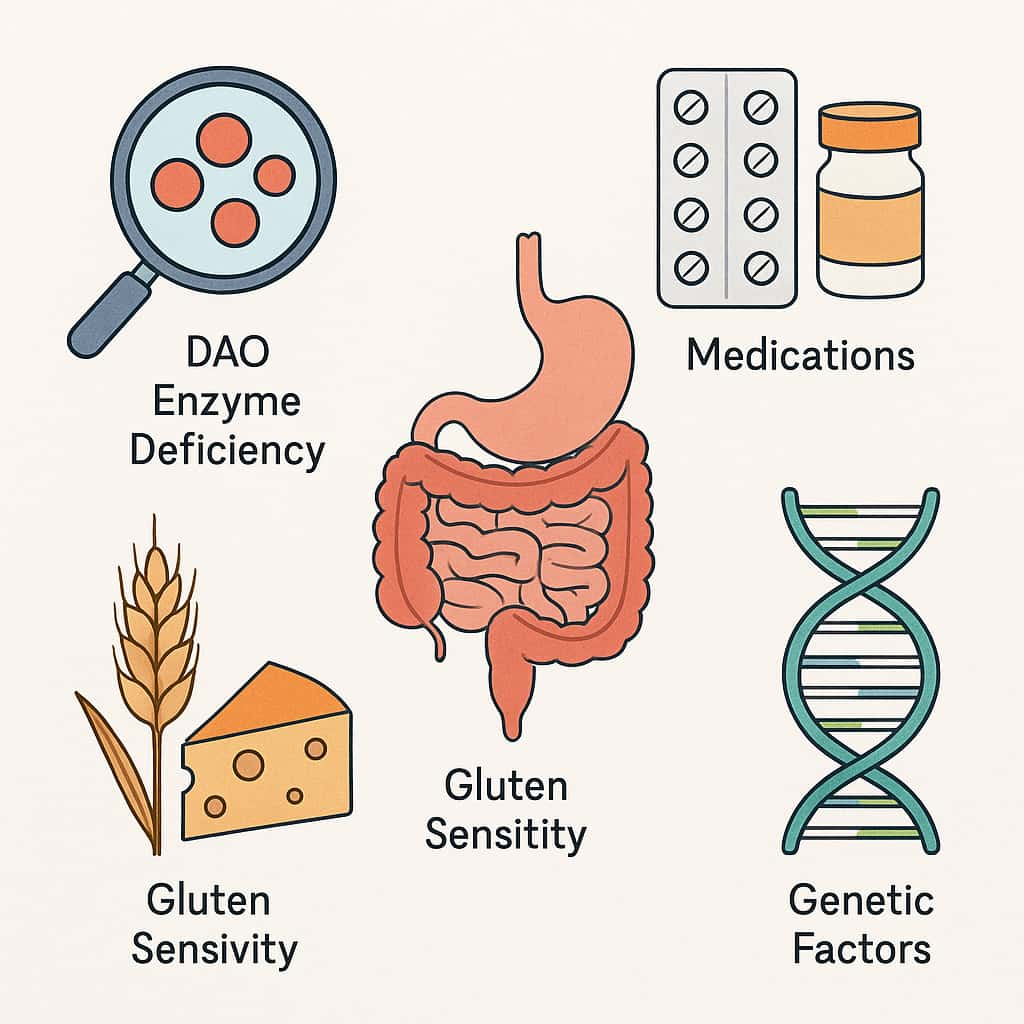

Causes of Histamine Intolerance
Understanding the underlying causes of histamine intolerance is essential if you’re trying to manage symptoms effectively. Unlike a typical food allergy, which involves an immune system reaction, histamine intolerance is more of a metabolic imbalance—your body takes in more histamine than it can break down.
The most common reason for histamine intolerance is a deficiency in the enzyme diamine oxidase (DAO). DAO is responsible for breaking down histamine from food, especially in the gut. If you don’t produce enough DAO or if its function is impaired histamine begins to build up in your bloodstream, leading to symptoms.
This deficiency can be genetic, but it’s often caused by other issues like:
- Chronic gut inflammation
- Infections or intestinal permeability (leaky gut)
- Certain medications (see below)
Some commonly used medications may interfere with DAO activity or increase histamine release in the body. These include:
- Non-steroidal anti-inflammatory drugs (NSAIDs), like ibuprofen or aspirin
- Antibiotics
- Antidepressants (especially MAO inhibitors)
- Muscle relaxants
- Antihypertensives (used for high blood pressure)
If you’re experiencing unexplained symptoms while on any of these, it’s worth speaking with your healthcare provider about their potential impact on DAO function.
Your gut is a central player in the processing of histamine. Conditions like:
- Irritable Bowel Syndrome (IBS)
- Celiac disease
- Crohn’s disease
- Gastroenteritis or infections
- Small Intestinal Bacterial Overgrowth (SIBO)
can all disrupt DAO production and histamine breakdown. These conditions may either damage the cells that produce DAO or create an environment where histamine-producing bacteria thrive.
Some people with gluten sensitivity may also experience reduced DAO activity. Additionally, consuming histamine-rich or histamine-liberating foods in excess (like aged cheeses, wine, or fermented foods) can overwhelm your system—especially if your DAO levels are already low.
While less common, some individuals may be born with genetically low DAO enzyme activity. In these cases, symptoms might appear early in life and persist until properly identified and managed.
Knowing the root cause of your histamine intolerance is the first step in creating a plan that works for your body. And often, that plan includes following a low-histamine diet to reduce symptom flare-ups and begin the path toward balance.


How Is Histamine Intolerance Diagnosed?
Diagnosing histamine intolerance isn’t always straightforward. Because its symptoms can mimic food allergies, gut disorders, or even chronic stress, it often gets misdiagnosed—or missed altogether. That’s why working closely with a healthcare provider or a registered dietitian is key to getting the right answers.
Since symptoms like bloating, rashes, fatigue, and migraines are common across multiple conditions, healthcare providers usually start by ruling out possibilities such as:
- Food allergies or sensitivities
- Lactose or gluten intolerance
- Irritable Bowel Syndrome (IBS)
- Inflammatory Bowel Disease (IBD)
- Celiac disease
- Autoimmune disorders
Only once these have been excluded will histamine intolerance be considered more seriously.
A valuable tool in diagnosis is a 2 to 4-week food and symptom journal. During this time, you:
- Eliminate foods that are high in histamines
- Track what you eat and how you feel each day
- Reintroduce foods slowly, one at a time, to identify potential triggers
This method can be very effective in spotting patterns between your symptoms and specific foods.
Some healthcare providers may run a DAO blood test, which measures the level of diamine oxidase enzyme in your blood. Low levels may suggest that your body has trouble breaking down histamine.
However, this test isn’t foolproof it only provides a piece of the puzzle. DAO levels can fluctuate depending on gut health, medications, and other lifestyle factors.
Measuring histamine levels in the blood can also be helpful, but timing is important. Since symptoms often appear after a buildup, your levels might not be elevated unless you’re in the middle of a reaction.
Though rarely used for histamine intolerance, skin prick tests may sometimes be performed to check for general histamine response. However, these tests are better suited for allergies and are not widely accepted as a reliable method for diagnosing histamine intolerance.
Histamine intolerance is mostly diagnosed through symptom tracking and elimination diets, not just lab tests. This process may take time, but it helps uncover the foods and habits that work best for your body.
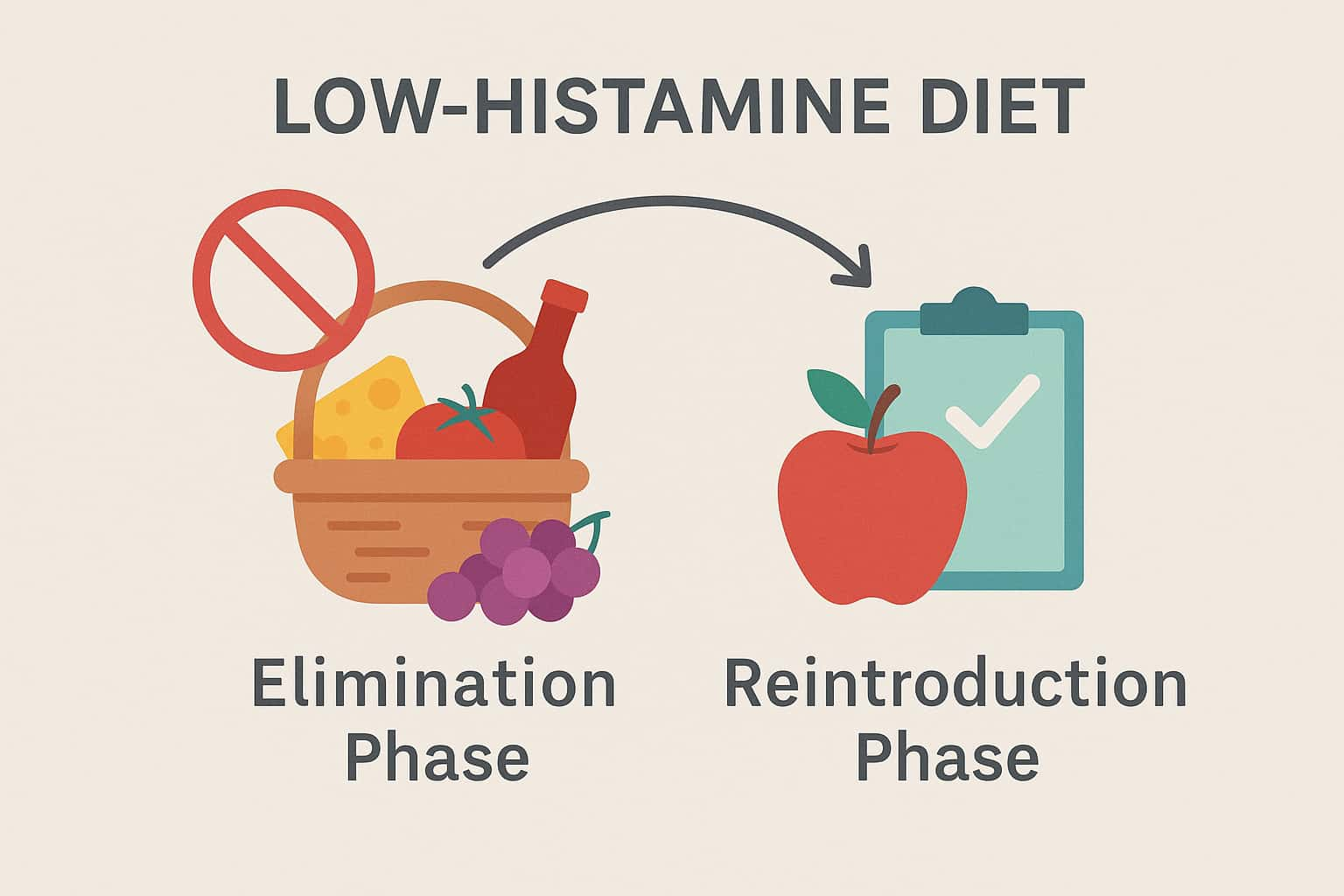

How the Low-Histamine Diet Works
A low-histamine diet isn’t just another wellness trend it’s a targeted strategy designed to help your body rebalance itself when histamine levels become too high. If you’ve been dealing with symptoms like unexplained headaches, skin reactions, or digestive discomfort, this diet can serve as both a relief method and a diagnostic tool.
What Is the Low-Histamine Diet?
This diet involves eliminating or significantly reducing foods that are high in histamine or known to trigger its release. The goal is to give your body a break from histamine overload and allow symptoms to calm down. After a few weeks, specific foods are slowly reintroduced—one at a time to identify which ones cause negative reactions.
This is why it’s often referred to as an elimination diet. It’s not meant to be followed permanently, but rather to help you pinpoint your personal triggers.
Remove high-histamine and histamine-liberating foods from your meals. Stick to low-histamine alternatives, eat fresh, and avoid anything aged, fermented, or processed.
Gradually bring back foods, one at a time, while monitoring your symptoms. If a particular food triggers a reaction, it’s likely something your body doesn’t tolerate well.
For individuals with low DAO activity, even small amounts of histamine in food can cause symptoms to snowball. By temporarily avoiding these foods, you reduce the histamine burden on your body, giving it time to reset and recover.
While this diet can bring relief, it’s also highly restrictive, which makes long-term use difficult. It’s best used under the guidance of a professional to avoid nutrient deficiencies and ensure you’re getting a balanced diet during the elimination phase.
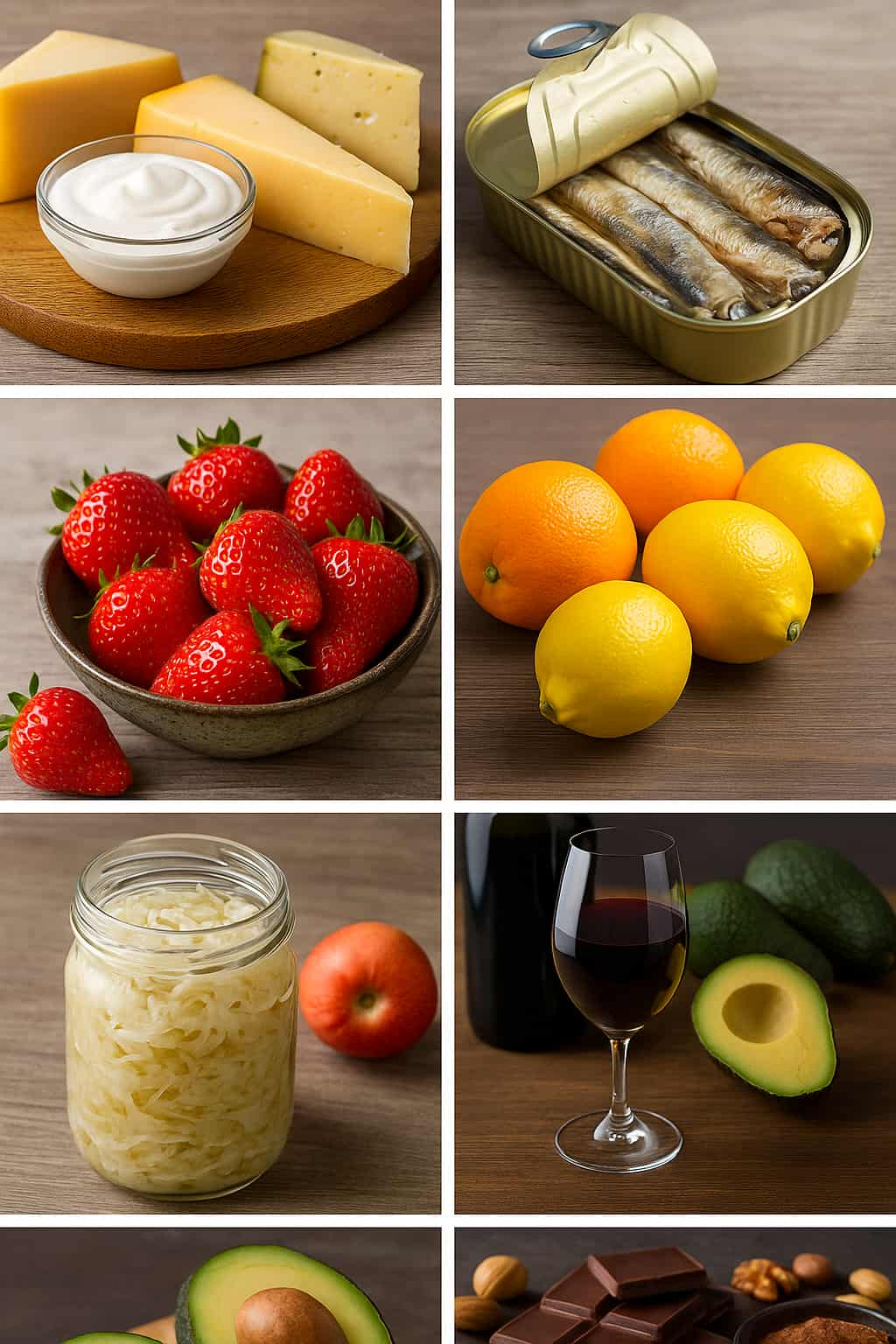

List of High-Histamine Foods to Avoid
If you’re starting a low-histamine diet, knowing which foods to avoid is crucial. These foods either contain high levels of histamine, trigger the body to release histamine, or interfere with your body’s ability to break it down.
Below is a categorized list to help you easily identify and eliminate the most common histamine-rich offenders from your meals.
These are some of the biggest histamine culprits. During fermentation, bacteria produce histamine as a byproduct.
- Aged cheeses (cheddar, gouda, parmesan)
- Yogurt and kefir
- Sauerkraut and kimchi
- Soy sauce, miso, and tamari
- Vinegar (especially balsamic and wine vinegar)
- Fermented pickles
- Kombucha
- Cured meats (salami, pepperoni, prosciutto)
Histamine levels increase as meat and fish age even when refrigerated.
- Smoked fish (salmon, mackerel)
- Canned fish (tuna, sardines, anchovies)
- Processed meats (ham, sausages, bacon)
- Leftover meat (stored too long in the fridge)
Some fruits release histamine in the body or block DAO enzyme function.
- Citrus fruits (oranges, lemons, limes, grapefruits)
- Strawberries
- Bananas
- Pineapples
- Avocados
- Papayas
- Tomatoes
While many vegetables are great for health, a few are naturally high in histamine or act as liberators.
- Eggplants
- Spinach
- Tomatoes
- Sauerkraut (fermented cabbage)
Certain drinks, especially those that are fermented or aged, can either contain histamine or trigger its release.
- Alcohol (especially wine, beer, and champagne)
- Energy drinks
- Black tea
- Mate tea
Some foods don’t contain histamine but stimulate the release of histamine in the body.
- Chocolate and cocoa
- Nuts (especially walnuts, cashews, peanuts)
- Shellfish
- Egg whites (in some sensitive individuals)
- Artificial food colorings and preservatives
- Flavored or packaged snacks
Be cautious with leftovers, even low-histamine foods. Histamine levels increase the longer food sits, especially proteins.
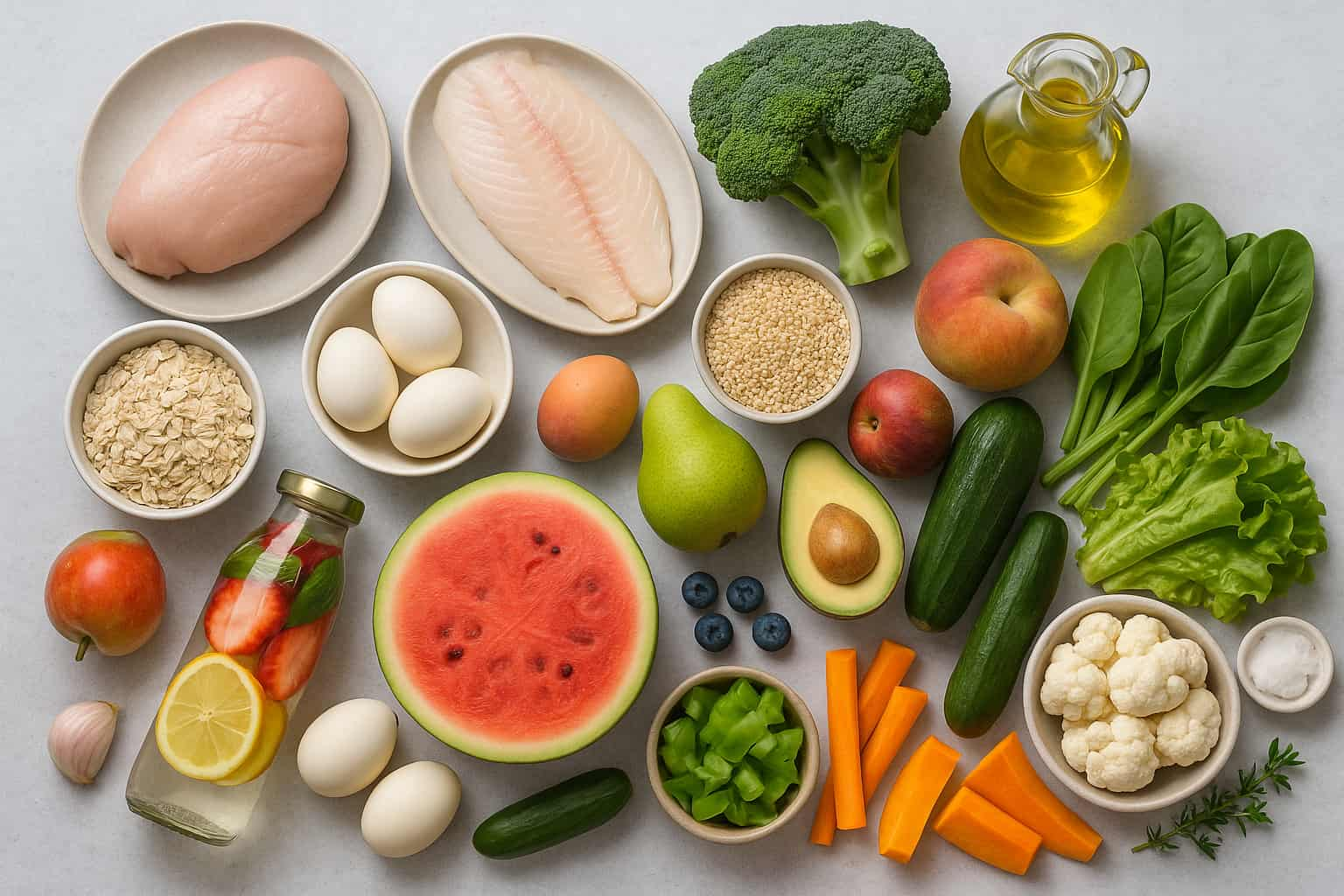

List of Low-Histamine Foods to Enjoy
Just because you’re avoiding histamine-rich foods doesn’t mean your meals have to be boring. The low-histamine diet includes plenty of delicious, nourishing options that can help support your health without triggering uncomfortable symptoms.
Below is a list of safe, low-histamine foods that are typically well-tolerated. These foods are best when consumed fresh and minimally processed, as histamine levels increase with storage and aging.
Choose fresh meat and fish that haven’t been aged or preserved. Cooking methods also matter—boiling or baking is better than grilling or frying.
- Fresh chicken or turkey (boiled or baked)
- Fresh lamb
- Fresh, wild-caught white fish (cod, trout, haddock)
- Eggs (boiled, poached, or scrambled)
Tip: Buy meat in small portions and freeze immediately to prevent histamine buildup.
Carbohydrates are a safe and satisfying part of a low-histamine diet.
- White or brown rice
- Quinoa
- Oats
- Buckwheat
- Millet
- Rice noodles
- Plain crackers or rice cakes (without additives)
These veggies are safe when fresh, not canned or fermented. Avoid freezing them too long.
- Zucchini
- Carrots
- Sweet potatoes
- Broccoli
- Cauliflower
- Green beans
- Cucumber
- Lettuce
- Pumpkin
Stick to non-citrus fruits that are fresh and ripe not overripe, dried, or canned.
- Apples (especially red)
- Pears
- Blueberries
- Watermelon
- Mango (in moderation)
- Peaches
- Melon
Fat is essential for hormone production and nutrient absorption. These sources are generally well-tolerated:
- Olive oil
- Coconut oil
- Avocado oil (note: avocado fruit itself may not be tolerated by all)
- Ghee or clarified butter
Since many pre-made sauces and seasonings contain additives, it’s best to stick with fresh herbs.
- Basil
- Parsley
- Thyme
- Oregano
- Sea salt
- Garlic (fresh; avoid powders or processed versions)
Skip the wine and opt for hydrating, anti-inflammatory beverages.
- Water (filtered or spring)
- Herbal teas (e.g., chamomile, rooibos, ginger)
- Coconut water (unsweetened, fresh)
- Homemade fruit-infused water
- Cook fresh, eat fresh avoid leftovers.
- Freeze individual portions right after cooking if you need to store food.
- Focus on whole, unprocessed foods with minimal ingredients.
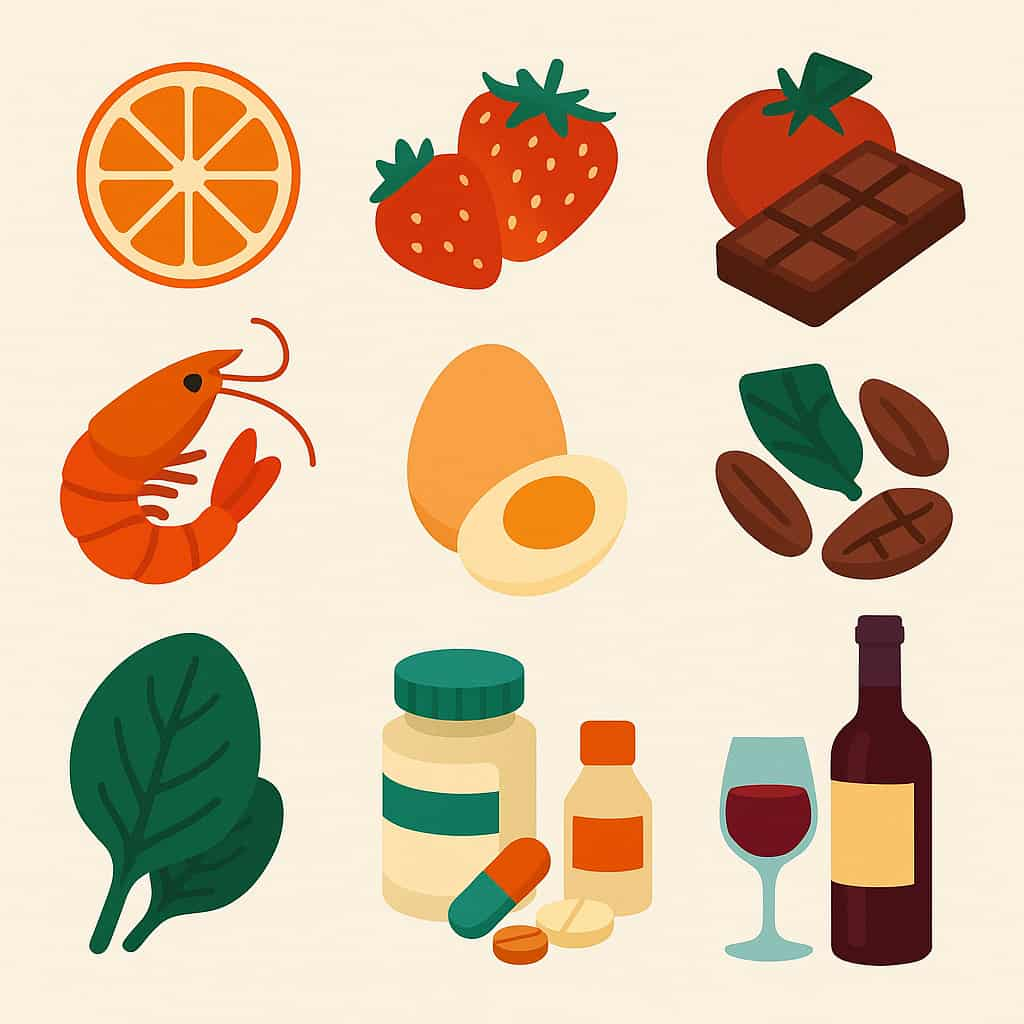

Histamine-Liberators & DAO Blockers
Avoiding high-histamine foods is only part of the picture when managing histamine intolerance. Some foods, even if they don’t contain much histamine themselves, can still cause your body to release histamine these are known as histamine-liberators. Others may block the activity of DAO, the enzyme that breaks histamine down, making it harder for your body to stay balanced.
Knowing these hidden triggers can make a big difference in how effective your low-histamine diet is.
These foods stimulate the release of histamine from your body’s own cells, even though they are not high in histamine content themselves.
- Citrus fruits (oranges, lemons, grapefruits, limes)
- Strawberries
- Tomatoes
- Shellfish
- Egg whites (in sensitive individuals)
- Chocolate and cocoa
- Spinach
- Alcohol
- Nuts (especially walnuts, cashews, peanuts)
Note: Sensitivity varies some people react strongly to these, while others may not.
DAO (diamine oxidase) is the main enzyme that breaks down histamine in your gut. If something blocks this enzyme, histamine levels can rise—even if you’re avoiding high-histamine foods.
- NSAIDs (ibuprofen, aspirin)
- Antidepressants (especially MAO inhibitors)
- Blood pressure meds (beta-blockers)
- Antibiotics
- Muscle relaxants
- Antihistamines (yes, paradoxically some types)
- Preservatives like sulfites and benzoates
- Artificial food colorings and flavorings
- MSG (monosodium glutamate)
- Not only does it contain histamine, but it also blocks DAO activity, making it a double trigger.
Even on a well-planned low-histamine diet, symptoms may persist if you’re unknowingly consuming DAO blockers or histamine-liberating foods. That’s why tracking both what you eat and how you feel is essential for identifying these hidden disruptors.
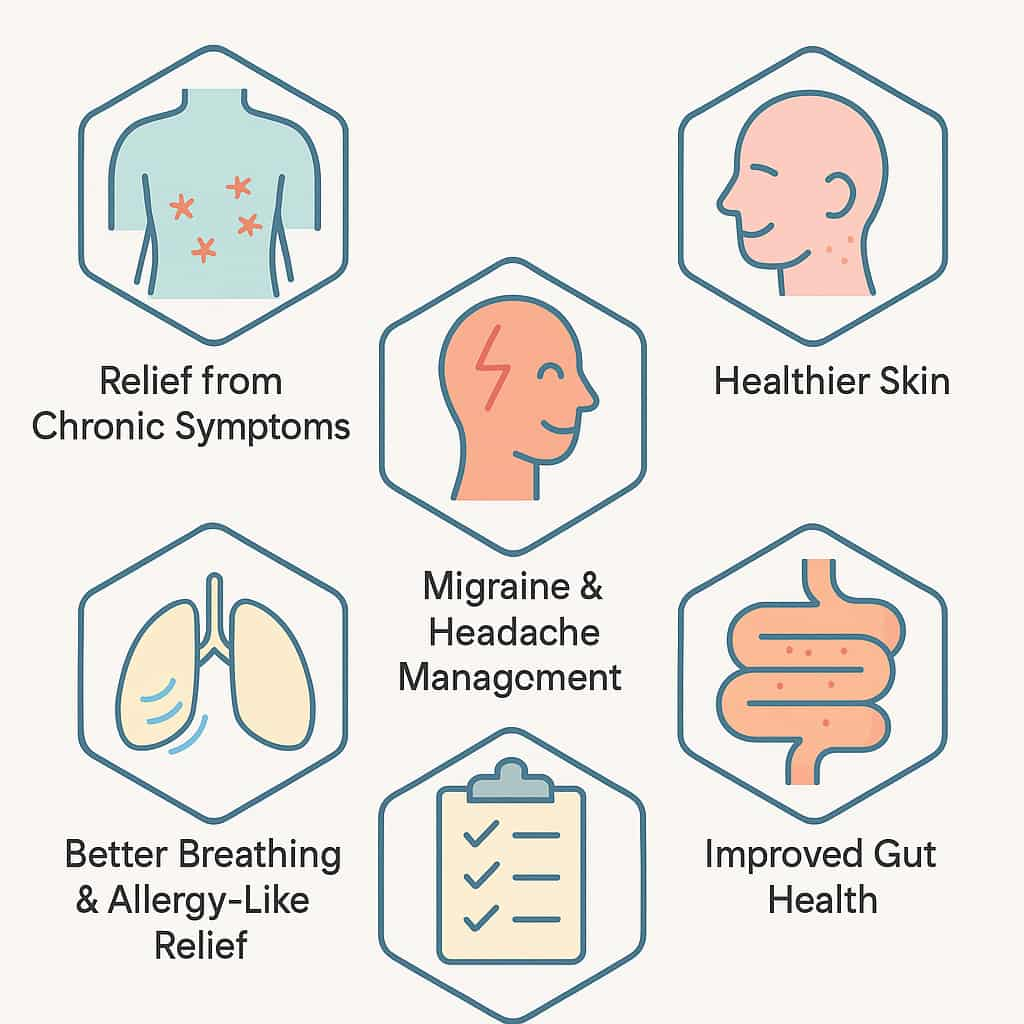

Benefits of a Low-Histamine Diet
A low-histamine diet isn’t just about avoiding certain foods—it’s about helping your body reset, heal, and regain balance. While it may feel restrictive at first, many people experience powerful improvements in both physical and emotional health once they reduce histamine overload.
Here are some of the top science-backed and real-world benefits of following a low-histamine diet:
1. Relief from Chronic Symptoms
If you’ve been struggling with unexplained migraines, fatigue, bloating, or rashes, a low-histamine diet can bring significant relief. By lowering your histamine load, you’re giving your body a chance to calm its inflammatory responses.
2. Migraine & Headache Management
Histamine plays a known role in vasodilation—the widening of blood vessels—which can trigger migraines in sensitive individuals. By cutting back on histamine-rich foods, many find a dramatic reduction in headache frequency and intensity.
3. Healthier Skin
Skin conditions like eczema, hives (urticaria), or chronic itchiness are often triggered or worsened by high histamine levels. A low-histamine diet may help reduce inflammation and irritation, especially in people who haven’t responded well to conventional treatments.
4. Better Breathing & Allergy-Like Relief
Histamine is a key compound in allergic reactions. Lowering its presence in your diet may help relieve:
- Runny nose
- Nasal congestion
- Sneezing
- Itchy, watery eyes
5. Diagnostic Clarity
One of the biggest benefits of this diet is awareness. It helps you identify which foods are behind your symptoms, guiding you toward a more personalized eating plan. It’s not just about restriction it’s about learning what works for your unique body.
6. Improved Gut Health
By eliminating fermented, aged, or overly processed foods, your gut lining gets a break. Many people experience less bloating, fewer stomach cramps, and more regular digestion while on a low-histamine diet.
- Risks and Drawbacks of a Low-Histamine Diet
While a low-histamine diet can offer relief for many people, especially during the diagnostic or healing phase, it’s important to recognize that this approach isn’t without its challenges. Like any restrictive diet, it has potential downsides that should be considered—especially if followed long term.
1. Risk of Nutrient Deficiency
Cutting out large food groups such as fermented foods, certain fruits and vegetables, dairy, and protein sources can lead to nutritional gaps over time. For example:
- Removing dairy may lower your calcium intake.
- Avoiding fish may reduce omega-3 fatty acids.
- Eliminating whole grains or fruits may limit fiber and antioxidants.
2. Impractical for Long-Term Use
A low-histamine diet is not meant to be permanent. It’s a short-term elimination strategy to help identify trigger foods. Sticking to it indefinitely can feel restrictive, socially isolating, and hard to sustain.
- Eating out becomes difficult.
- Meal prepping requires extra effort.
- Travel and social events can be stressful.
That’s why most experts recommend reintroducing foods gradually to build a more flexible and sustainable long-term plan.
3. Confusing Symptoms and False Positives
Because histamine intolerance symptoms overlap with many other conditions—like IBS, gluten sensitivity, and anxiety it’s easy to misinterpret results during the elimination process. You may think a food is a trigger when it’s not, especially if symptoms are influenced by stress, hormones, or unrelated health issues.
4. Mental and Emotional Impact
Highly restrictive diets can take a toll on your relationship with food, sometimes leading to anxiety, guilt, or food fear. That’s why it’s important to approach this diet with flexibility and professional support.
Bottom Line:
While the low-histamine diet can be incredibly helpful for identifying food-related triggers and reducing symptoms, it should be viewed as a temporary tool, not a lifestyle. Once you identify your specific intolerances, your goal should be to reintroduce as many well-tolerated foods as possible for a well-rounded and enjoyable way of eating.
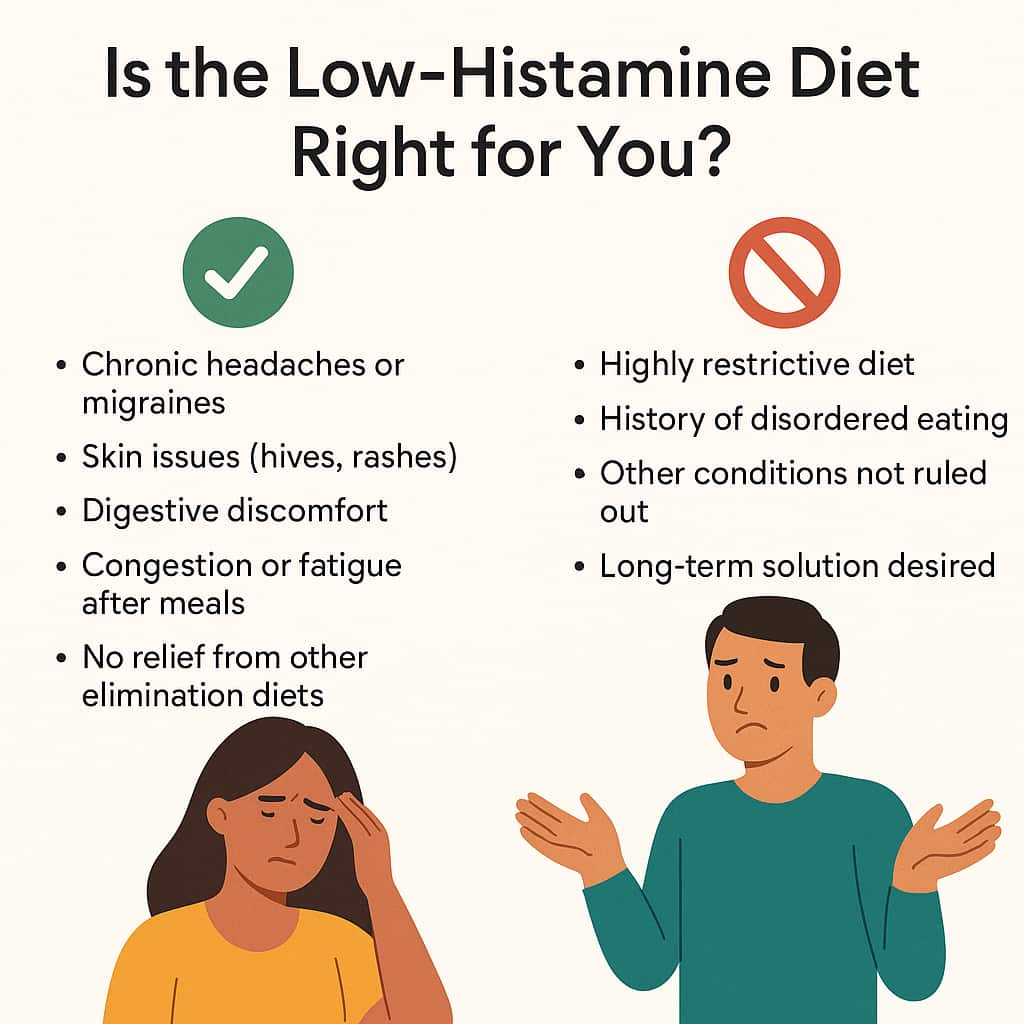

Is the Low-Histamine Diet Right for You?
You might be wondering: “Is this the solution I’ve been searching for?” The truth is, the low-histamine diet isn’t for everyone but it can be a powerful tool for those dealing with specific, unexplained symptoms.
If you’ve been struggling with symptoms that come and go like migraines, skin flare-ups, bloating, or fatigue without a clear diagnosis, this diet could help you pinpoint what’s really going on.
- You experience chronic headaches or migraines that don’t respond well to medication.
- You’ve noticed skin issues like hives, rashes, or itching with no clear trigger.
- You have digestive discomfort bloating, nausea, or diarrhea after eating certain foods.
- You feel congested, sneezy, or tired after meals, but allergy tests come back normal.
- You’ve tried other elimination diets (gluten-free, dairy-free, etc.) without relief.
If you nodded yes to one or more of the above, it may be worth exploring the low-histamine approach under the supervision of a healthcare provider.
- You’re already on a highly restrictive diet and struggling to meet your nutritional needs.
- You have a history of disordered eating or anxiety around food.
- You haven’t yet ruled out other possible medical conditions (e.g., food allergies, IBS, etc.).
- You’re looking for a long-term diet solution (this is meant as a short-term diagnostic tool).
The most important thing to remember is this: you don’t need to do it all at once. You can start small by cutting out fermented foods, for example and monitor how your body responds.
Many people on CoreWellFit.com find that a flexible, mindful approach to eating is more sustainable and enjoyable. Start with simple changes, track your symptoms, and make decisions that work best for your lifestyle.
Final Thoughts: Health Benefits & Takeaways
The low-histamine diet offers a thoughtful, science-backed approach to uncovering the hidden reasons behind chronic, unexplained symptoms from migraines and fatigue to skin irritation and digestive distress. For many, it’s the breakthrough that brings relief after months (or years) of confusion.
But while this diet can be highly effective as a short-term tool, it’s important not to view it as a lifelong eating plan. Instead, think of it as a reset button a temporary way to clear the noise and tune into how your body responds to certain foods.
- Reduces inflammation and helps calm the immune response
- Offers relief from migraines, hives, digestive issues, and fatigue
- Helps identify specific food triggers through a structured elimination process
- Can support clearer skin, better mood, and improved sleep in sensitive individuals
- Encourages mindful, fresh, and whole-food-based eating
Your Next Steps
If you suspect histamine intolerance, the best path forward is to:
- Speak with your healthcare provider or a registered dietitian
- Start a food and symptom journal
- Begin the elimination process slowly, focusing on the most obvious high-histamine foods
- Track how you feel and reintroduce foods carefully
- Listen to your body the goal is to build a personalized, flexible, and nourishing diet that fits your life
A Final Word from CoreWellFit
At CoreWellFit.com, we believe that empowering your core starts with understanding your body. Whether you’re exploring low-histamine eating or simply looking to live well and feel better, we’re here to support you with real, research-backed guidance without the overwhelm.
Your path to better health doesn’t have to be extreme. It just has to be intentional.











































